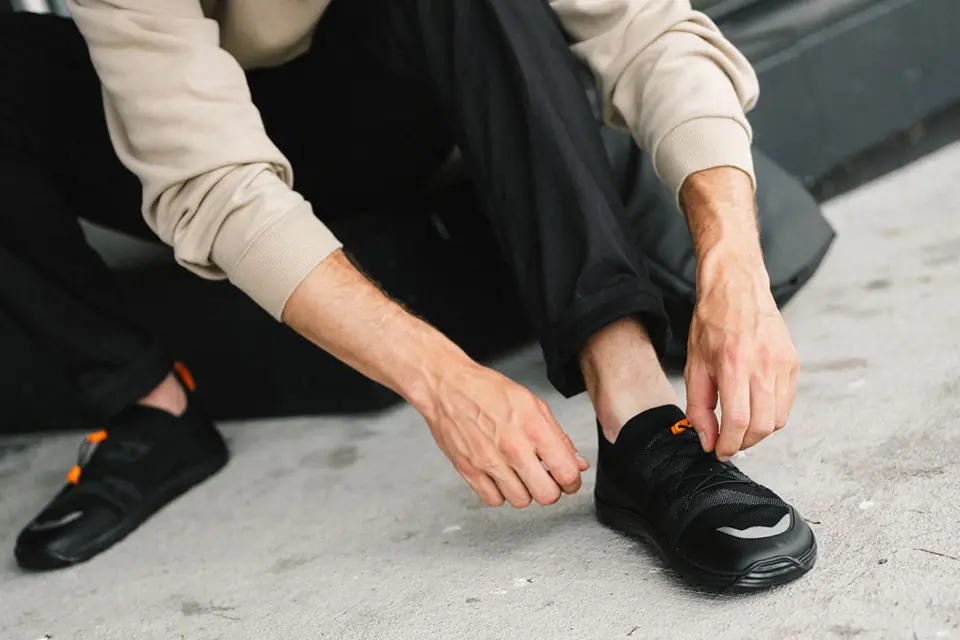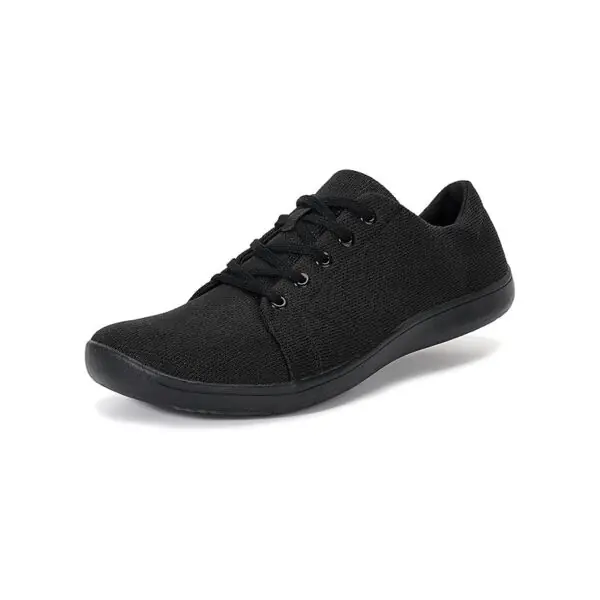
How to Walk On Barefoot Shoes
Barefoot Walking: Embrace the Natural Stride for a Healthier You
Are you curious about the benefits of walking barefoot or looking to enhance your walking experience with minimalist shoes? Barefoot walking offers a natural way of moving that can improve your posture, strengthen your feet, and boost overall well-being. In this comprehensive guide, we’ll delve into everything you need to know about barefoot walking, the best barefoot shoes to try, and how to transition smoothly into this healthier lifestyle. Whether you’re a seasoned minimalist enthusiast or just starting your barefoot journey, this article is your go-to resource for all things barefoot.

Table of Contents
What Is Barefoot Walking?
Barefoot walking refers to the practice of walking without traditional shoes, allowing your feet to move naturally against the ground. This method emphasizes a forefoot strike, where the ball of your foot lands first, promoting a more natural gait and reducing the impact on your joints.
Key Characteristics:
- Natural Foot Movement: Encourages your feet to move as they were designed, enhancing flexibility and strength.
- Sensory Feedback: Direct contact with the ground provides immediate feedback, improving balance and coordination.
- Minimal Cushioning: Barefoot walking shoes have thin soles that mimic walking barefoot, offering protection without compromising natural movement.
Embracing barefoot walking can lead to improved foot health, better posture, and a deeper connection with your environment.
Benefits of Walking Barefoot
Walking barefoot or in minimalist shoes offers a multitude of benefits that go beyond just foot health. Here are some of the primary advantages:
Enhanced Foot Strength
Traditional shoes often restrict the movement of your feet, leading to muscle weakness. Barefoot walking engages the muscles in your feet and lower legs, promoting strength and flexibility.
Improved Posture and Balance
With better foot strength and sensory feedback, walking barefoot can help improve your posture and balance. This reduces the likelihood of falls and enhances overall body alignment.
Reduced Injuries
The natural movement facilitated by barefoot walking decreases the risk of injuries related to overpronation and improper gait mechanics. By promoting a forefoot strike, it reduces the strain on your heels and joints.
Increased Sensory Awareness
Direct contact with the ground enhances your sensory perception, making you more aware of your surroundings and improving coordination.
How to Transition to Barefoot Walking
Transitioning to barefoot walking requires patience and gradual adaptation to allow your feet and body to adjust to the new movement patterns.
Start Slowly:
Begin by incorporating short barefoot walking sessions into your daily routine. Start with 10-15 minutes and gradually increase the duration as your feet become accustomed.
Listen to Your Body:
Pay attention to any discomfort or pain. If you experience soreness, reduce the time spent barefoot and allow your muscles to recover.
Strengthen Your Feet:
Engage in exercises that strengthen your foot muscles, such as toe curls, arch lifts, and calf stretches. Stronger feet will better support the demands of barefoot walking.
Choose the Right Environment:
Start walking barefoot in safe, flat areas like grass or smooth pavements to minimize the risk of injury from sharp objects or uneven surfaces.
By following these steps, you can smoothly transition to barefoot walking and enjoy its numerous health benefits.
Choosing the Right Barefoot Shoes
Selecting the appropriate barefoot shoe is crucial for maximizing the benefits of barefoot walking while providing necessary protection and comfort.
Key Features to Look For:
- Zero Drop: Ensures an even sole height from heel to toe, promoting a natural gait without elevating your heel.
- Wide Toe Box: Accommodates the natural spread of your toes, enhancing balance and reducing discomfort.
- Thin, Flexible Sole: Provides protection while allowing for sensory feedback and natural foot movement.
- Lightweight Materials: Minimizes strain on your feet and allows for effortless movement.
Recommended Barefoot Shoes:
- Flat Sole White Leather Barefoot Toddler Sneakers: Perfect for young feet, offering both protection and flexibility.
- Casual Lightweight Men’s Barefoot Shoes for Working Out: Ideal for everyday activities and workouts, promoting natural movement.
- Minimalist Training Zero Drop Athletic Barefoot Style Shoes: Designed for athletes seeking high performance without compromising on the barefoot experience.
Choosing the right barefoot shoe ensures that you can enjoy barefoot walking comfortably and safely.
Common Questions About Barefoot Walking
What Are the Main Differences Between Barefoot Walking and Traditional Walking?
Barefoot walking emphasizes a natural gait with a forefoot strike, whereas traditional walking often involves a heel strike. This difference can lead to improved foot strength and reduced joint stress in barefoot walking.
Can Barefoot Walking Help with Foot Pain?
Yes, barefoot walking can alleviate certain types of foot pain by strengthening foot muscles and improving posture. However, it’s essential to transition gradually to avoid overuse injuries.
Do I Need Special Shoes for Barefoot Walking?
While you can walk barefoot, barefoot shoes offer protection from rough surfaces and help transition your feet to natural movement without compromising on foot health.
How Long Does It Take to Adapt to Barefoot Walking?
Adaptation varies per individual. Some people may feel comfortable within a few weeks, while others might take several months. Listening to your body and transitioning slowly is key.
Understanding Heel Strikes and Forefoot Landing
The way your foot strikes the ground plays a significant role in overall walking efficiency and joint health.
Heel Strike:
Heel striking involves landing on the heel first, which can create a braking effect and increase impact on the joints. This common pattern in traditional footwear can lead to discomfort and overuse injuries.
Forefoot Landing:
In contrast, forefoot landing means the ball of your foot touches the ground first. This method promotes a smoother, more efficient stride, reduces impact on the heel, and enhances sensory feedback for better balance.
Importance of Stride Length:
Maintaining an appropriate stride length ensures efficient energy use and reduces the risk of injury. Shorter, quicker strides are often encouraged in barefoot walking to promote a natural gait.
Adopting a forefoot landing can lead to more natural movement patterns and long-term benefits for your musculoskeletal health.
Minimalist Shoes vs. Traditional Footwear
Comparing minimalist shoes to traditional footwear highlights significant differences in design and impact on foot health.
Minimalist Shoes:
- Thin Soles: Provide minimal cushioning, promoting natural foot movement.
- Lightweight: Reduces fatigue and allows for greater agility.
- Wide Toe Boxes: Accommodate natural toe splay, improving balance and comfort.
Traditional Footwear:
- Cushioned Soles: Often designed to absorb impact, which can alter natural gait.
- Heeled Design: Promotes heel striking, which may increase joint stress.
- Narrow Toe Boxes: Restrict toe movement, potentially leading to foot deformities.
Advantages of Minimalist Shoes:
- Enhanced Foot Strength: Encourages active engagement of foot muscles.
- Improved Posture: Promotes natural alignment of the body.
- Better Sensory Feedback: Increases awareness of the walking surface, enhancing balance.
Choosing minimalist shoes over traditional footwear can lead to healthier feet and a more natural walking experience.
Caring for Your Barefoot Shoes
Proper care extends the life of your barefoot shoes and maintains their performance.
Cleaning Tips:
- Hand Wash Only: Use soapy cold water to gently clean your shoes. Avoid the washing machine as it can damage the materials.
- Use Natural Products: Opt for natural products for cleaning to preserve the integrity of your shoes.
- Dry Naturally: Let your shoes air dry away from direct heat sources to prevent warping or shrinking.
Maintenance:
- Store Properly: Keep your shoes in a cool, dry place to avoid mold and mildew.
- Regular Inspection: Check for wear and tear, especially on the soles, to ensure continued protection.
- Apply Liquiproof Spray: Enhance the water resistance of your shoes by using liquiproof treatments, especially if you frequently walk in wet conditions.
Additional Care:
- Avoid Over-Washing: Excessive cleaning can degrade the sole’s flexibility and durability.
- Use Shoe Trees: Maintain the shape of your shoes when not in use.
Taking these care steps ensures your barefoot shoes remain comfortable and functional for longer periods.
Barefoot Walking Techniques for Optimal Health
Mastering the right techniques can enhance the benefits of barefoot walking and prevent potential injuries.
Leaning Forward:
Maintain a slight forward lean from the ankles rather than bending at the waist. This position promotes a forefoot strike and reduces strain on your lower back.
Shorter Strides:
Adopt shorter, quicker strides to minimize heel striking and promote a natural gait. This approach improves efficiency and reduces joint impact.
Ground Feel:
Engage with the ground by feeling the surface beneath your feet. This sensory feedback enhances balance and coordination, allowing for more responsive movements.
Swing Your Free Leg:
Allow your free leg to swing naturally, maintaining a rhythm that complements your walking pace. This fluid motion supports overall body balance and stability.
Engage Your Core:
Activate your core muscles to support your posture and facilitate smoother movement. A strong core contributes to better balance and reduces the risk of injury.
By implementing these techniques, you can maximize the health benefits of barefoot walking and enjoy a more natural, efficient stride.
Top Barefoot Shoe Recommendations
Selecting the right barefoot shoe is essential for a comfortable and effective walking experience. Here are some top recommendations:
Casual Lightweight Men’s Barefoot Shoes for Working Out
Perfect for daily activities and workouts, these shoes offer flexibility and durability without sacrificing the barefoot experience.
Minimalist Training Zero Drop Athletic Barefoot Style Shoes
Designed for athletes, these shoes provide the necessary support and flexibility for intense training sessions while maintaining a natural gait.
Flat Sole White Leather Barefoot Toddler Sneakers
Ideal for young feet, these sneakers offer protection and flexibility, promoting healthy foot development in children.
Barefoot Gang Looks
Combine style with functionality with these barefoot shoes that blend seamlessly with everyday outfits while supporting natural foot movement.
Zero Drop Non Slip Barefoot Dress Shoes Women
Perfect for formal occasions, these dress shoes provide the barefoot feel without compromising on style or stability.
Choosing from these options ensures that you find the perfect barefoot shoe to match your lifestyle and walking needs.
Summary: Key Takeaways
- Barefoot walking promotes natural foot movement, strengthening muscles and improving flexibility.
- Minimalist shoes with features like zero drop and wide toe boxes enhance the barefoot experience.
- Transition to barefoot walking gradually to allow your feet and body to adapt safely.
- Proper shoe care using hand washing and natural products extends the life of your barefoot shoes.
- Understanding walking techniques like forefoot landing and shorter strides maximizes health benefits.
- Selecting the right barefoot shoe from a variety of options ensures comfort and functionality for all activities.
- Barefoot walking improves posture, balance, and reduces the risk of injuries associated with traditional footwear.
Embrace the natural stride with barefoot walking and experience the numerous health benefits it offers. Whether you choose to go entirely barefoot or opt for minimalist shoes, prioritizing natural movement can lead to a healthier, more balanced lifestyle.
Important Internal Links:
- Men’s Barefoot Running Sneakers Shoes
- Non Slip Barefoot Walking Shoes for Men
- Minimalist Training Zero Drop Athletic Barefoot Style Shoes
Sources:
